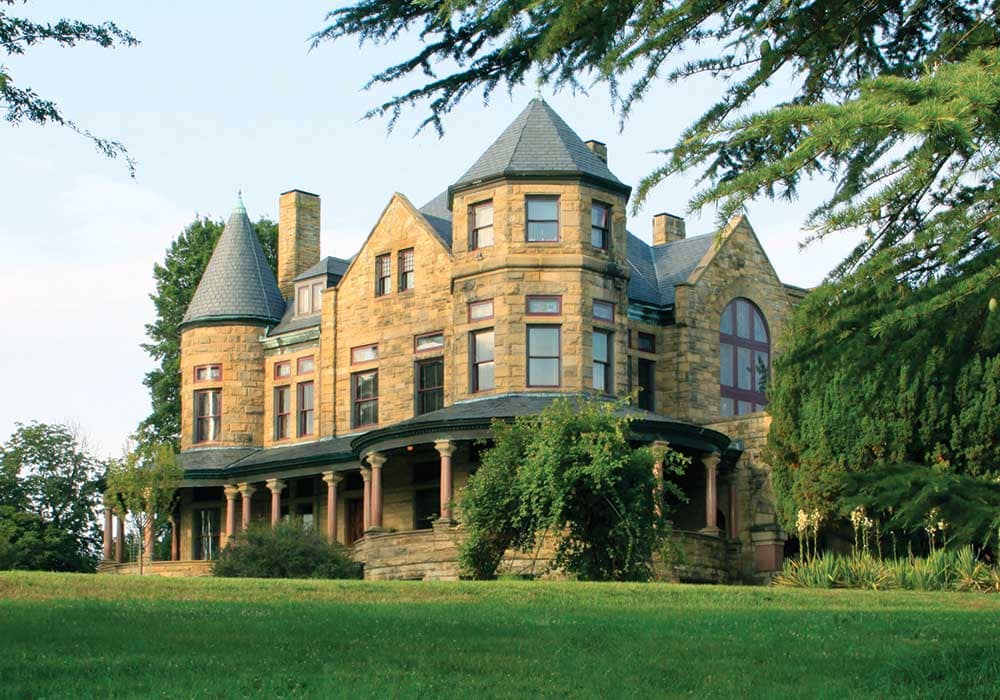Maymont, a 100-acre Victorian estate in Richmond, Virginia, is currently closed for a historic preservation project, the largest in its history. The mansion, a centerpiece of the estate, is expected to reopen in 2024 for the holiday season, boasting a fresh red slate roof and an upgraded climate control system. This marks a significant milestone, celebrating Maymont’s 100th anniversary as a public space, offering a rich blend of history, nature, and architecture.
The Mansion’s Architectural Significance
Constructed in 1893 by James and Sallie Dooley, Maymont Mansion is an architectural marvel, showcasing a blend of Romanesque Revival and Queen Anne styles. Designed by the Rome-educated architect Edgerton Stewart Rogers, the mansion reflects the grandeur of the Gilded Age. Its 33 rooms spread across 12,000 square feet embody the luxurious lifestyle of the era, making it a significant example of historical architecture.
Unique Aspects of Maymont Mansion
The Maymont Mansion, unlike many historic house museums, retains a direct link to its original owners, the Dooleys, with no major alterations by subsequent families. Although lacking early architectural drawings, its integrity is preserved through ongoing research and documentation. The Maymont Foundation’s stewardship since 1975 has led to extensive conservation efforts, enhancing the mansion’s authenticity and presentation, making it a well-preserved document of Gilded Age design.
Gardens of Maymont
Maymont’s landscape is adorned with two main gardens: The Japanese Garden, a serene space with a koi pond, waterfall, and traditional elements like the torii arch, and The Italian Garden, reflecting 15th and 16th-century Italian classical style, featuring a pergola, fountains, and roses. These gardens, each with their unique style and design, are a testament to the Dooleys’ sophisticated taste and love for diverse horticultural styles.
The Arboretum’s Diverse Flora
The Maymont Arboretum boasts a collection of over 200 species of trees and woody plants, including exotic and native varieties. This collection is not only aesthetically pleasing but also serves a scientific purpose, reflecting the Dooleys’ educated nature. The arboretum features exotic species like the False Larch from Japan and the White Enkianthus from China, all planted strategically for optimal growth by landscaper Henry E. Baskervill.
Special Features and Events at Maymont
Beyond its historical and natural offerings, Maymont hosts a variety of events and features. The estate is a popular venue for outdoor weddings, centered around its picturesque gardens and numerous gazebos. It also includes ten specialty gardens, like Marie’s Butterfly Garden, focused on a diverse range of flora, and the Herb Garden, maintained since 1957 and a centerpiece for the “Herbs Galore” festival. These features and events add to Maymont’s allure as a cultural and educational destination.
Comparative Table: Maymont’s Features
| Feature | Description | Historical Significance |
|---|---|---|
| Maymont Mansion | 33-room residence, Gilded Age design | Direct link to original owners, preserved authenticity |
| Japanese Garden | Koi pond, waterfall, torii arch | Blend of traditional Japanese elements and local history |
| Italian Garden | Pergola, fountains, classical design | Inspired by 15th and 16th-century Italian style |
| Arboretum | Over 200 species of trees, exotic and native | Reflects the Dooleys’ sophisticated and educated taste |
| Special Events | Outdoor weddings, specialty gardens, festivals | Cultural and educational importance |
Key Highlights in Bullet Points
- Historic Preservation: Major restoration project underway, enhancing Maymont’s historical integrity;
- Architectural Marvel: Unique blend of Romanesque Revival and Queen Anne styles;
- Direct Historical Link: Unaltered 32-year occupancy by the original owners, the Dooleys;
- Diverse Gardens: Japanese and Italian gardens, each with distinct design elements;
- Arboretum Diversity: Collection of over 200 species of trees, including exotic varieties;
- Cultural Events: Venue for weddings, festivals, and educational programs.
Conclusion
Maymont Estate stands as a remarkable testament to Richmond’s history, art, and nature. From its architecturally significant mansion to its diverse gardens and arboretum, Maymont offers a rich, multifaceted experience. The ongoing preservation project and the estate’s role in community events further cement its status as a treasured historical and cultural landmark.
